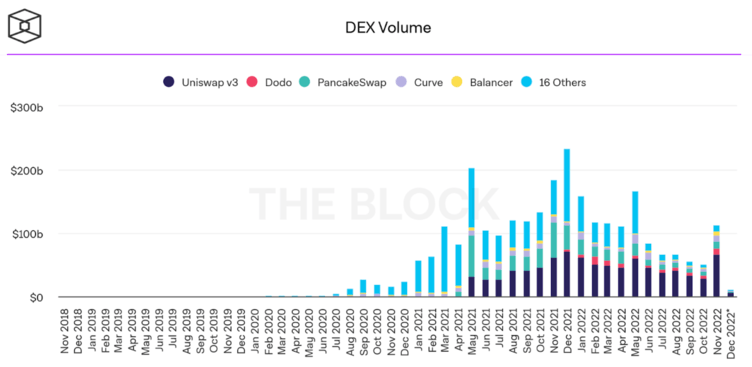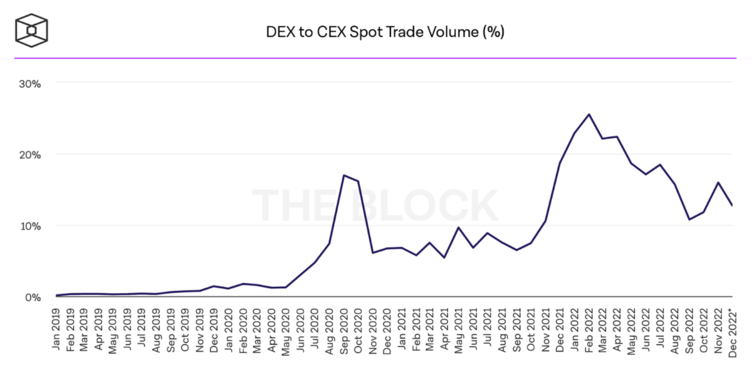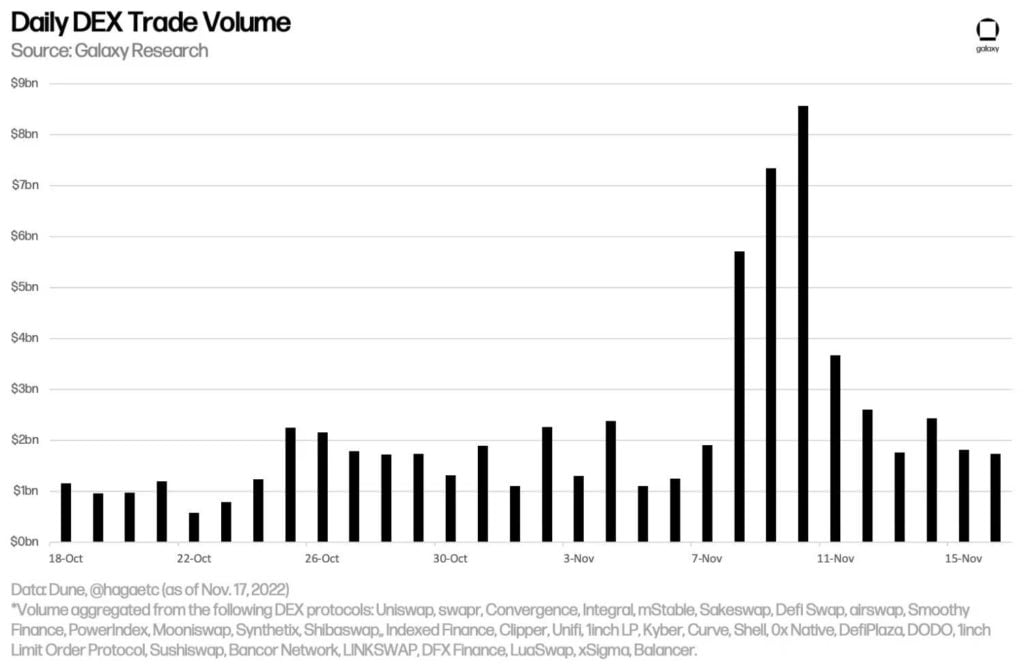Crypto exchanges are marketplaces that allow buyers and sellers to trade cryptocurrencies and other digital assets. There are two categories of exchanges:
- Centralized Exchanges (CEX): Run by a single entity, CEXs are intermediaries between buyers and sellers, facilitating orders and transferring funds between parties. Examples include Binance and Coinbase.
- Decentralized Exchanges (DEX): Using blockchain technology, DEXs facilitate peer-to-peer transactions between buyers and sellers, eliminating the need for centralized intermediaries. Examples include Uniswap and Curve.
At Uniswap Labs, we believe DEXs are the superior method to trade digital assets due to in-built user protections. They are:
- Self-Custodial: Users never relinquish control over their assets
- Permissionless: The only requirement to trade is having an internet connection
- Immutable: The code used to run the DEX cannot be modified or altered
- Transparent: All transactions are recorded on a public ledger that can be queried
These traits protect customers from negligent or malicious actions that could jeopardize assets without their consent or knowledge. Unfortunately, CEXs are not immune to these outcomes. FTX, a popular CEX, collapsed after facing a liquidity crunch after revealing it did not hold customer assets one-to-one.
DEX vs CEX
DEXs exploded in popularity during DeFi Summer in 2020 and have supported over two trillion dollars in volume to date. After reaching a peak of $234B in December 2021, DEXs have averaged over $100B every month of 2022. Of this volume, roughly 70% happens on the Uniswap Protocol on Ethereum Mainnet.

CEXs — which have been around much longer — are understandably further along. In May 2021, CEX spot volume totaled $2.3T, which is nearly equivalent to all-time DEX volume. In 2022, CEXs averaged a monthly volume of $695B, nearly 7x that of monthly DEX volume.
Can DEXs catch up to CEXs?
Despite the multi-year head start, there is strong evidence that DEXs are eating into CEX market share. The DEX-to-CEX spot volume ratio has been steadily increasing, peaking above 25% in February 2022.

With the clear user safety advantages baked into DEX technology, we anticipate that users will prefer DEXs to CEXs due to increased transparency, self-custodied assets, and permissionless access. However, DEXs and CEXs compete in the same customer market. To flip CEX market dominance, DEXs must:
- Create friendlier onboarding flows
- Improve the retail user experience
- Compete on cost and fees
Onboarding to CEX vs DEX
Onboarding to CEXs is significantly easier than DEXs for two reasons:
- Fiat on-ramps allow for retail users to purchase from their bank accounts or credit & debit cards
- Users do not need to learn about wallets or key management
The first problem is an easy fix. Recently, wallets have begun to integrate with fiat payment providers, meaning users are able to purchase cryptocurrencies directly from a self-custodied wallet.
The second challenge is a bit more complex. Seed phrase and private key management is essential to navigating the crypto ecosystem but users expect to be able to recover their accounts if they forget their passwords. Methods such as iCloud backups, multi-party computation, and social recovery have made significant UX improvements.
In our experience addressing common user frustration navigating DEXs, we’ve made a number of improvements to onboard directly into DeFi. For example, the Uniswap Web App allows users to purchase and swap cryptocurrencies within minutes using a credit card, debit card, or bank transfer.
Retail User Experience
Once onboarding is complete, users will want to swap cryptocurrencies and manage their portfolios. CEXs provide a more intuitive interface for this. Similar to financial apps like Venmo and Robinhood, CEXs have intuitive trade features where connecting to DEXs often requires navigating to the app, approving transactions, and then trading. Once again, the solution here is primarily UX with native wallet swaps, account abstraction, and intuitive user interfaces.
Costs and Fees
CEXs offer low swap fees when converting one cryptocurrency to another. On the other hand, DEX swaps are subject to gas fees, which can spike when networks are congested. The Ethereum roadmap plans to improve scalability and capacity. In time, sharding and Layer 2 networks will lower transaction costs to be cheaper than CEXs while offering security provisions that CEXs cannot provide.
DEXs and wallets that incorporate and abstract away L2 networks will be the first to compete with CEXs on cost.
Conclusion
For many users, self-custody, permissionless access, immutable code, and transparency come second to the user experience. These choices are certainly understandable – no one expects to be rugged. However, during times of market volatility, it’s apparent that DEXs are the more popular option. For example, as markets rocked on the back of FTX’s collapse, DEX trade volume skyrocketed and Uniswap did more volume than any CEX. There is verifiable evidence that DEXs can overtake CEX volume. It’s only a matter of time until the UX bridges the gap.
Source: https://en.cryptonomist.ch/2023/02/12/2023-cmc-crypto-playbook-how-dexs-can-surpass-cexs-by-uniswap-labs/
